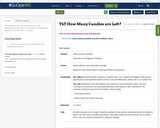
This resource is part of Tools4NCTeachers.
This assessment may be used for instructional or assessment purposes. A scoring rubric is included.
- Subject:
- Mathematics
- Material Type:
- Assessment
- Formative Assessment
- Date Added:
- 07/12/2019

This resource is part of Tools4NCTeachers.
This assessment may be used for instructional or assessment purposes. A scoring rubric is included.
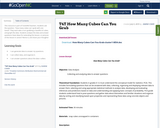
This resource is part of Tools4NCTeachers.
Students ask the question, "How many cubes can I grab with one hand?" They each take a turn grabbing a handful of cubes, and graph the data. Students analyze the data and answer questions
Have ideas for extending this lesson, or pictures of this lesson in action? Remix it, and share your thoughts!
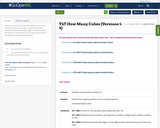
This resource is part of Tools4NCTeachers.
In this task, students count a set of cubes, record the matching numeral, and determine which digit is in the ones place and which is in the tens place. The task may be used for instructional or assessment purposes.
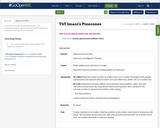
This resource is part of Tools4NCTeachers.
This assessment may be used for instructional or assessment purposes. A scoring rubric is included.
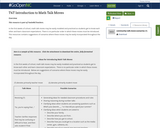
This resource is part of Tools4NCTeachers.In the first weeks of school, math talk moves may be easily modeled and practiced as students get to know each other and learn classroom expectations. There is no particular order in which these moves must be introduced. This resources contains suggestions of scenarios where these moves may be easily incorporated throughout the day.
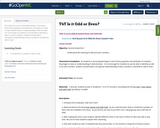
This resource is part of Tools4NCTeachers.
This lesson look at the properties and attributes of numbers, in order to help students have an understanding of odd and even. It is not enough for students to just be able to identify an odd or an even number, students should build a conceptual understanding of why a number is classified as odd or even.
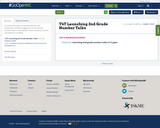
This resource is part of Tools4NCTeachers.
This presentation identifies suggestions for introducing Number Talks in second grade. Links to resources, articles, and videos are provided.
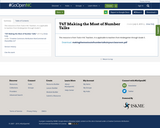
This resource is from Tools 4 NC Teachers. It is applicable to teachers from Kindergarten through Grade 5.
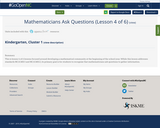
This resource is part of Tools4NCTeachers.
This is lesson 4 of 6 lessons focused around developing a mathematical community at the beginning of the school year. While this lesson addresses standards NC.K.MD.1 and NC.K.MD.2, its primary goal is for students to recognize that mathematicians ask questions to gather information.
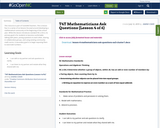
This resource is part of Tools4NCTeachers.
This is lesson four in a series of six lessons focused around developing a mathematical community at the beginning of the school year. While this lesson introduces standard NC.2.OA.3, its primary goal is for students to become comfortable talking with peers, posing questions to each other, sharing in collaborative groups, and using existing community math norms. A secondary goal is to begin exposing them to even/odd numbers.
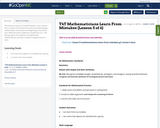
This resource is part of Tools4NCTeachers.
This is lesson five in a series of six lessons focused around developing a mathematical community at the beginning of the school year. While this lesson addresses standard NC.2.G.1, the primary goal is for students to recognize that mathematicians use their mistakes as opportunities to learn.
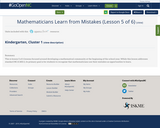
This resource is part of Tools4NCTeachers.
This is lesson 5 of 6 lessons focused around developing a mathematical community at the beginning of the school year. While this lesson addresses standard NC.K.MD.3, its primary goal is for students to recognize that mathematicians use their mistakes as opportunities to learn.
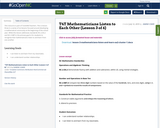
This resource is part of Tools4NCTeachers.
This is lesson three in a series of six lessons focused around developing a mathematical community at the beginning of the school year. While this lesson addresses standards NC.2.OA.2 and NC.2.NBT.4, the primary goal is for students to recognize that mathematicians listen to and learn from one another.
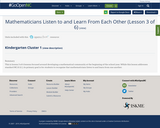
This resource is part of Tools4NCTeachers.
This is lesson 3 of 6 lessons focused around developing a mathematical community at the beginning of the school year. While this lesson addresses standard NC.K.G.1, its primary goal is for students to recognize that mathematicians listen to and learn from one another.
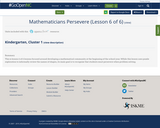
This resource is part of Tools4NCTeachers.
This is lesson 6 of 6 lessons focused around developing a mathematical community at the beginning of the school year. While this lesson uses puzzle exploration to informally review the names of shapes, its main goal is to recognize that students must persevere when problem solving.
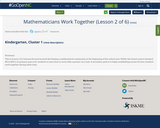
This resource is part of Tools4NCTeachers.
This is lesson 2 of 6 lessons focused around developing a mathematical community at the beginning of the school year. While this lesson meets standard NC.K.MD.2, its primary goal is for students to learn how to work with a partner on a task. A secondary goal is to begin establishing norms for how students work together during math class.
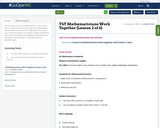
This resource is part of Tools4NCTeachers.
This is lesson two in a series of six lessons focused around developing a mathematical community at the beginning of the school year. The primary goal is for students to begin establishing norms for how students work together during math class throughout the whole year. A secondary goal is to estimate length.

This resource is part of Tools4NCTeachers.
This is lesson three in a series of six lessons focused around developing a mathematical community at the beginning of the school year. While this lesson meets standard NC.1.MD.2, its primary goal is for students to learn how to work with a partner on a task. A secondary goal is to begin establishing norms for how students work together during math class.
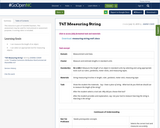
This resource is part of Tools4NCTeachers.
This assessment may be used for instructional or assessment purposes. A scoring rubric is included.
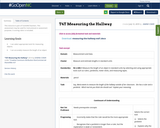
This resource is part of Tools4NCTeachers.
This assessment may be used for instructional or assessment purposes. A scoring rubric is included.